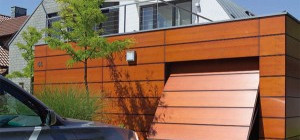The world is full of beautiful things but there is perhaps nothing quite as breathtakingly vivid as a stained glass window illuminated by bright rays of sunshine. When viewed from the dark interior of a building, stained glass appears to be a riot of color—sapphire blues, ruby reds, and emerald greens in an otherwise dreary, grey world. Unlike other forms of art, stained glass glows with such intensity that it appears to be alive. But why does stained glass possess these appealing characteristics? How does a simple arrangement of colored glass manage to shine, inspire, and move us?
A Light Source
 Elisabeth Kubler-Ross once said, "People are like stained glass windows. They sparkle and shine when the sun is out, but when the darkness sets in, their true beauty is revealed only if there is a light from within."
Elisabeth Kubler-Ross once said, "People are like stained glass windows. They sparkle and shine when the sun is out, but when the darkness sets in, their true beauty is revealed only if there is a light from within."
Elisabeth was really trying to communicate a deep message about the nature of the human spirit through these words. However, she also managed to explain quite a lot about how stained glass windows work. Stained glass relies on a light source for its characteristic vivid illumination. Stained glass is not like typical colored glass which would prove too opaque to allow much light to shine through. Instead, stained glass is specifically designed to be highly translucent. This quality allows a great deal of light to pass through it which highlights its colors beautifully. That is why stained glass is particularly bright when viewed from inside a building on a sunny day or from outside the building on a night when there is ample light within. Stained glass works with the light to create its powerful effect.
Our Eyes
A sufficient light source is absolutely essential for the sparkling quality of stained glass, but our vision also plays an important role in its perceived brilliance. The vividness of the colors we see when looking at stained glass windows from a darkened interior or from the outside at night has a lot to do with how our brain registers colors. The human brain doesn't consider a color on its own, but rather compares that color with other hues around it. This is precisely why we will always perceive a black cat as black and a white mouse as white, despite fluctuations in the amount of light and shadow falling on them. Therefore, when we gaze at a colorful stained glass window our brain compares those colors with the relative darkness of the surrounding environment. Their brightness in relation to everything around them causes us to perceive them as even more colorful.
Our Appreciation for Beauty
Sources of light and how our brain functions explain the hard, physical rationality behind why stained glass windows shine. There is however another explanation for why stained glass is so mesmerizing—it's beautiful. From towering stained glass church windows to tiny stained glass accents in a residence, the color and brightness of the glass clearly has immense aesthetic appeal. That beauty often triggers powerful emotions within us - joy, inspiration, elation, humility, gratitude, and virtually anything else along the human emotional spectrum. And who doesn't feel moved when walking into a church and seeing the people and stories from the Bible spring to life in the dramatic radiance of stained glass. It's no wonder that stained glass has been incorporated in churches and structures since the time of Ancient Egypt and Rome. Its luminosity is unparalleled in any other art form.
Written by Steven L. Yarbrough. Steven is the managing editor of the West Coast Artisan.







